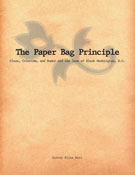The Cultivation of Whiteness: Science, Health and Racial Destiny in AustraliaPosted in Books, Health/Medicine/Genetics, History, Media Archive, Monographs, Oceania, Politics/Public Policy on 2012-07-13 17:26Z by Steven |
The Cultivation of Whiteness: Science, Health and Racial Destiny in Australia
Melbourne University Publishing
March 2002
364 pages
235 x 154 mm, 25 b/w illustrations & 4 maps
Paperback ISBN-13: 978-0-522-84989-9
Warwick Anderson, Research Professor of History
University of Sydney
Winner of the Australian Historical Association W.K. Hancock Prize 2004
In this lucid and original book, Warwick Anderson offers the first comprehensive history of Australian medical and scientific ideas about race and place.
In nineteenth-century Australia, the main commentators on race and biological differences were doctors. The medical profession entertained serious anxieties about ‘racial degeneration’ of the white population in the new land. They feared non-white races as reservoirs of disease, and they held firm beliefs on the baneful influence of the tropics on the health of Europeans.
Gradually these matters became the province of public health and biological science. In the 1930s anthropologists claimed ‘race’ as their special interest, until eventually the edifice of racial classification collapsed under its own proliferating contradictions.
The Cultivation of Whiteness examines the notion of ‘whiteness’ as a flexible category in scientific and public debates. This is the first time such an analytic framework has been used anywhere in the history of medicine or of science. Anderson also provides the first full account of experimentation in the 1920s and 1930s on Aboriginal people in the central deserts.
This very readable book draws on European and American work on the development of racial thought and on the history of representations of the body. As the first extensive (and entertaining) historical survey of ideas about the peopling of Australia, it will help to reshape debate on race, ethnicity, citizenship and environment.
Table of Contents
- Acknowledgements
- Introduction
- The Temperate South
- 1. Antipodean Britons
- 2. A Cultivated Society
- The Northern Tropics
- 3. No Place for a White Man
- 4. The Making of the Tropical White Man
- 5. White Triumph in the Tropics?
- 6. Whitening the Nation
- Aboriginal Australia
- 7. From Deserts the Prophets Come
- 8. The Reproductive Frontier
- Conclusion: Biology and Nation
- Notes
- Bibliography of Works Cited
- Index




